Southern Sales & Services provide a comprehensive range of options and custom specifications for ATEX & IECEx onshore / offshore offshore platform refrigeration and air conditioning systems.
This is backed by our standard key product range of Bock ATEX rated refrigeration compressors, spares, packaged air conditioning, controls and refrigeration controls.
In the production process of oil and gas and especially in case of gas compression, for example storage and transport of liquefied gas such as oxygen, nitrogen, carbonic acid, chlorine and methane, temperature control plays a vital role.
In the oil and natural-gas sector, industrial refrigeration technology assures safety in the process and quality in the product: cooling removes water from the energy medium. This prevents the formation of methane hydrates and enables feeding natural gas through the distribution mains with a constant calorific value. This means that the flames in your cooking stoves and heating systems always burn uniformly.
Electrical as well as mechanical devices operated in explosive atmospheres must fulfill what are known as ATEX (ATmospheres EXplosibles) or IECEx conditions. The system builder must use correspondingly labeled, conforming components for this type of use. Bock is the first European manufacturer to offer compressors conforming to the ATEX-/IECEx requirements.
The semi-hermetic Bock compressors of the HG model series are used as the basic compressor for use inside explosion-risk environments.
Bock maintains a quality management system in accordance with EN 80079-34 conforming to the ATEX and IECEx requirements
Our solutions are customer-oriented and user-friendly, because they are reliable, energy-efficient, durable and tailored to their specific needs

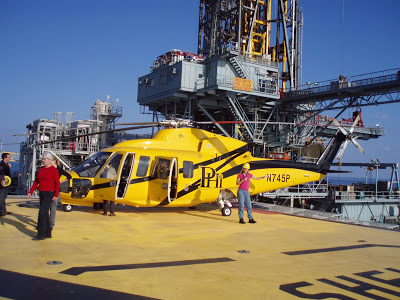
What is ATEX?
To create uniform minimum standards Europe-wide, the so-called ATEX Directive (ATEX is derived from the French ATmosphères EXplosibles) was created. Despite a seven-year transition period, many were surprised when it became mandatory on July 1, 2003. ATEX now includes dust explosion protection,
which was previously neglected in many national regulations, as well as mechanical explosion protection. And so today, even non-electric equipment (mechanical components) must be tested or at least evaluated.
1. EC Directive 1999/92/EC (ATEX 137)
This contains the “minimum requirements for improving the safety and health protection of workers potentially at risk from explosive atmospheres”. There, requirements are established especially for workplaces, such as:
• The creation of explosion-protection documents with a comprehensive risk evaluation
• Zone classification (zone 0, 1, 2, 20, 21, 22) and labeling
• Safety measures
• Requirements for workers
• Rules for work approval and authorization of work
• Equipment selection
This directive is therefore oriented primarily on the operators. This ATEX directive took effect on January 28, 2000. Existing workplaces must meet the new requirements not later than the end of the transition period on June 30, 2006.
2. EC Directive 2014/34/EU
This directive establishes the requirements for the products used in potentially explosive areas. These are:
• Equipment and protected systems for intended use in potentially explosive areas
• Safety, control and regulation devices that contribute to safe operation of the equipment and protective systems
• All electrical, mechanical, hydraulic and pneumatic equipment with its own source of ignition
This directive is oriented primarily on the manufacturers. It has replaced the EC Directive 94/9/EC since April 20, 2016. The 94/9/EC directive has been mandatory since July 1, 2003, and does not differ significantly from the now valid directive 2014/34/ EU. The certificates issued under the 94/9/EC directive remain valid without restriction.
What is IECEx?
The physical and chemical principles for occurrence of explosions, like the technical and organizational processes and measures that can be used to avoid explosion hazards, are valid worldwide, despite slight differences
It therefore makes sense to subject the approval conditions for electrical devices to a worldwide set of rules and so promote global free trade in goods through certificates that are country- or region-neutral. As part of this, the IEC has set up a procedure whose target is precisely this uniformity: The IEC-Ex system. The International Electrotechnical Commission (IEC) is responsible for worldwide standards in the electrotechnical area. IEC publications that discuss explosion protection of electrical devices and systems are worked out by the Technical Committee TC31 and are equivalent to recommendations. The requirements for gas-explosion-endangered areas and for areas with combustible dust are treated in the IEC 60079 series of standards.
Worldwide, there are numerous recognized IECEx certification offices (ExCB = certification body) and correspondingly many recognized IECEx test laboratories (ExTLs) that are accredited according to high, uniform standards and are monitored regularly.
For IECEx, a certificate is awarded only when the type inspections on test samples have passed and the presence of an effective quality management system has been proved by audit. But there are currently still regional and national approval processes everywhere in the world that have to be considered, such as the ATEX directive in the European Union area or national certifications in the USA (UL, FM).
But these national regulations can deviate from these standards. For this reason, the extent to which the IEC standards can be used in the individual countries must be investigated.
IECEx conformity
The IECEx system establishes the process for evaluation and certification of electrical devices for use in Ex areas. All devices of a certification body must be checked, regardless of the level of device protection.
The result is summarized in a technical report. At the same time, the manufacturer must have its quality management system checked and audited by a certification body. In combination with the manufacturer’s audit for quality monitoring (QAR), IEC issues a certificate of conformity (CoC) through an authorized certification body.
Comparison of ATEX and IECEx systems
| Certification | ATEX
Legally required in the EU |
IECEx
Voluntary in the EU Varied acceptance worldwide |
|
| Testing and conformity of electrical devices | Device category 1 and 2 Device category 3
• Recognized QA sQS-System • Internal production control • EC type examination • EU Declaration of certification Conformity • EU Declaration of Conformity • CE mark • CE mark |
Equipment protection level (EPL a, b, c)
• Quality Assessment Report (QAR) • Test Report (ExTR) • Certificate of Conformity (CoC) |
|
| Testing and conformity of non-electrical devices | Device category 1
• Recognized QA system • EC type examination • EU Declaration of Conformity • CE mark |
Device category 21) and 3
• Internal production control • EU Declaration of Conformity • CE mark 1) Submission of the technical documentation to a notified body |
Equipment protection level (EPL a, b, c)
• Quality Assessment Report (QAR) • Test Report (ExTR) • Certificate of Conformity (CoC) |
| Certificates | Manufacturer (often online) | IECEx online database | |
| Repair facilities | No EU-certified workshops (regulated on a national level) | Certified Service Facilities | |
| Service personnel | No EU-certified persons (regulated on a national level) | Certified Competent Persons | |
| Zone classification | No EU-certified bodies (regulated on a national level) | Certified Service Facilities (in progress) | |
ATEX COMPRESSOR EX-HG SERIES
PRODUCT QUICK-CHECK
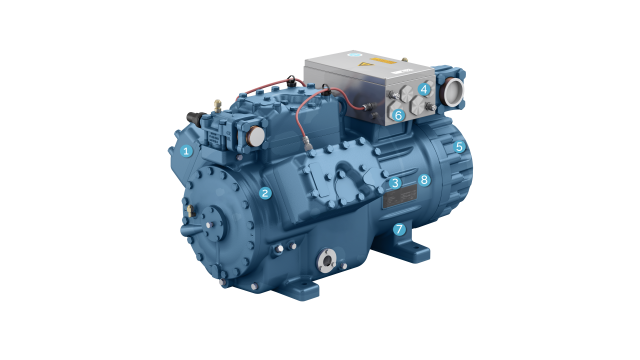
- Monitoring of all cylinder covers with special
thermal protection thermostats (zone 1: included in delivery) - 2 Paint finishes:
ESD paint (explosion subgroup IIC)
Polyurethane-free offshore paint (explosion subgroup IIB) - Classification of the compressor in temperature class T3
- Explosion-proof design of the electrical components
- Potential equalisation connection
- Explosion-proof terminal box
- Explosion-proof accessories available
ATEX HYDROCARBON COMPRESSORS ZONE 1 +2
7 SIZES AND 25 DISPLACEMENTS
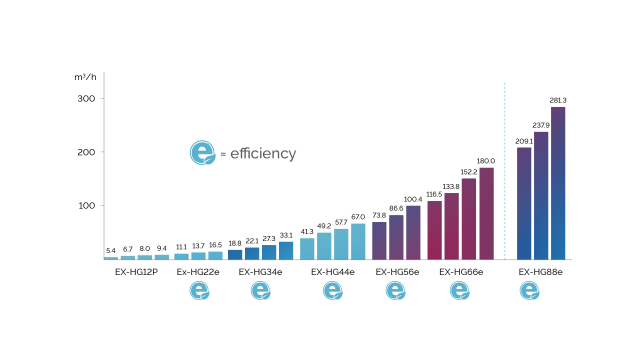
ATEX EX-HG COMPRESSORS OVERVIEW
FOR SYNTHETIC AND HYDROCARBON REFRIGERANTS
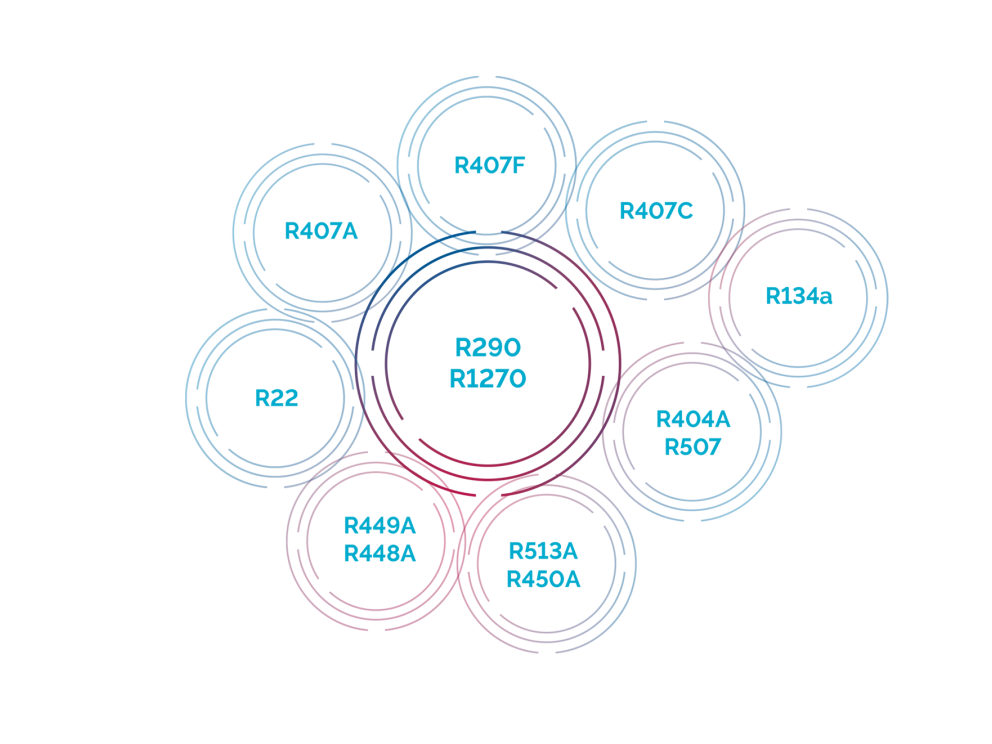
NEW: BOCK EX-HG66E COMPRESSOR
COMPRESSOR OPTIMISATION FOR POTENTIALLY EXPLOSIVE ENVIRONMENTS
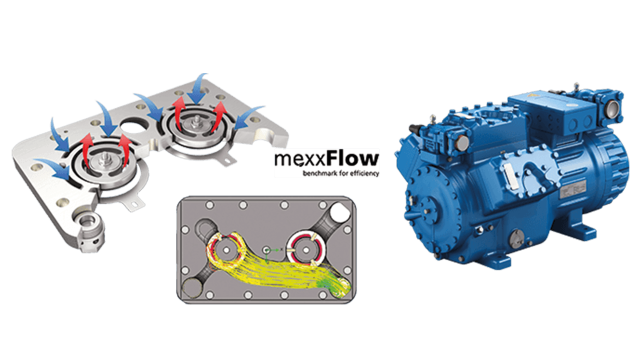
BOCK has expanded the HG66e compressor series, which is already successful on the market: EX-HG66e is the newly optimized compressor for potentially explosive environments. Proven refrigeration design meets state-of-the-art technology:
THE EX-HG66E SERIES CONSISTS OF FOUR SIZES FOR A DISPLACEMENT RANGE FROM 116.5 M³/H TO 180.0 M³/H (AT 50 HZ)
- With mexxFlow 2.0 valve plate system: more efficiency and reliability
- Replaces the previous 4- and 6-cylinder EX-HG6 and EX-HG7 series
- Focus on ease of service: stators can be changed on site without special tools
- Optimized emergency running characteristics
- Proven BOCK oil pump lubrication for high speed range in frequency converter operation
- Improved gas flow for increased efficiency
The mexxFlow valve plates, already proven in the HG88e series, stand for high efficiency and reliability in high power operation.
ATEX COMPRESSOR EX-HG SERIES
TYPE CODE
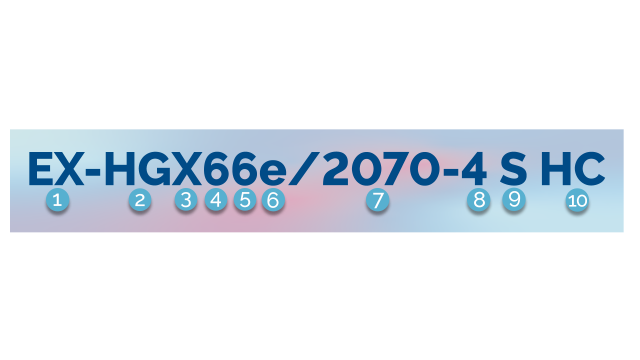
- EX version
- Series
- Oil filling
- Size
- Number of cylinders
- e-series (Efficiency)
- Displacement
- Number of poles
- Motor size
- Hydrocarbons
ATEX COMPRESSORS
- EX-HG ATEX Compressor
- EX-HG HC ATEX Compressors
Bock HG ATEX Compressors
Bock is the first European manufacturer to offer semi-hermetic compressors certified according to ATEX machine category 2 (zone 1+2). In 2014, Bock also included compressors certified according to ATEX machine category 3 (zone 2) in its program. Within the European Union, electrical and mechanical machinery operated in explosive atmospheres must comply with the so-called ATEX (ATmospheres EXplosibles) conditions. All ATEX compressors are also approved for operation with the current hydrocarbons. The models in the HG Series are the basic compressors for ATEX versions.
The models in the HG Series are the basic compressors for ATEX versions.
HG ATEX 2G (Zone 1+2)
| Types | Displacement at 50 Hz (1450 rpm) m³/h | Former types |
| EX-HG12P | 5.4 6.7 8.0 9.4 | |
| EX-HG22e | 11.1 13.7 16.5 | EX-HG22e (up to DK 056) |
| EX-HG34e | 18.8 22.1 27.3 33.1 | EX-HG34e (up to DK 056) |
| EX-HG44e | 41.3 49.2 57.7 67.0 | EX-HG4 EX-HG5 |
| EX-HG56e | 73.8 86.6 100.4 | EX-HG5 EX-HG6 |
| EX-HG66e | 116.5 133.8 152.2 180.0 | EX-HG6 EX-HG7 |
HG ATEX 3G (Zone 2)
More information about the HG ATEX compressors (e.g. technical/performance data, drawings, spare part lists, operating limits) can be found in the compressor selection tool VAP via the following link:
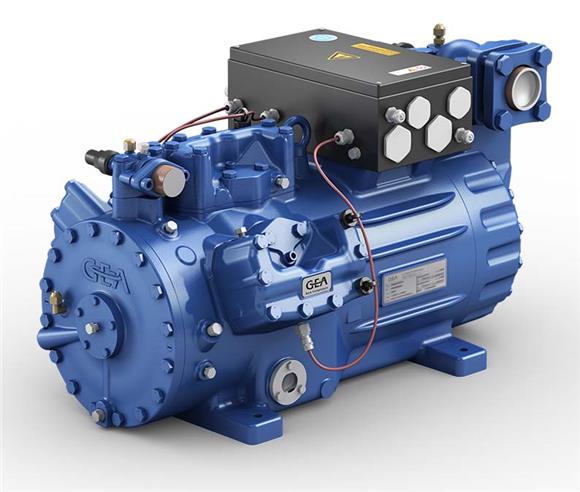
Bock HG HC ATEX Compressors
- For various applications, such as the field of supermarket refrigeration, hydrocarbons have established themselves as another natural alternative besides CO2.
- Due to the flammability of hydrocarbons the compressor has some safety related modifications.
HG HC ATEX 2G (Zone 1+2)
| Types | Displacement at 50 Hz (1450 rpm) m³/h | Former types |
| EX-HG12P | 5.4 6.7 8.0 9.4 | |
| EX-HG22e | 11.1 13.7 16.5 | EX-HG22e (up to DK 056) |
| EX-HG34e | 18.8 22.1 27.3 33.1 | EX-HG34e (up to DK 056) |
| EX-HG44e | 41.3 49.2 57.7 67.0 | EX-HG4 EX-HG5 |
| EX-HG56e | 73.8 86.6 100.4 | EX-HG5 EX-HG6 |
| EX-HG66e | 116.5 133.8 152.2 180.0 | EX-HG6 EX-HG7 |
HG HC ATEX 3G (Zone 2)
More information about the HG HC compressors (e.g. technical/performance data, drawings, spare part lists, operating limits) can be found in the compressor selection tool VAP via the following link:
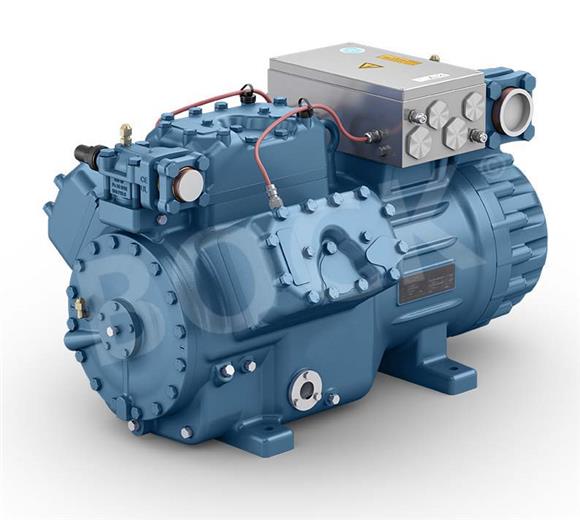
© 2025 Southern Sales and Services Ltd. All rights reserved.
Website made with by Thrive Digital.
